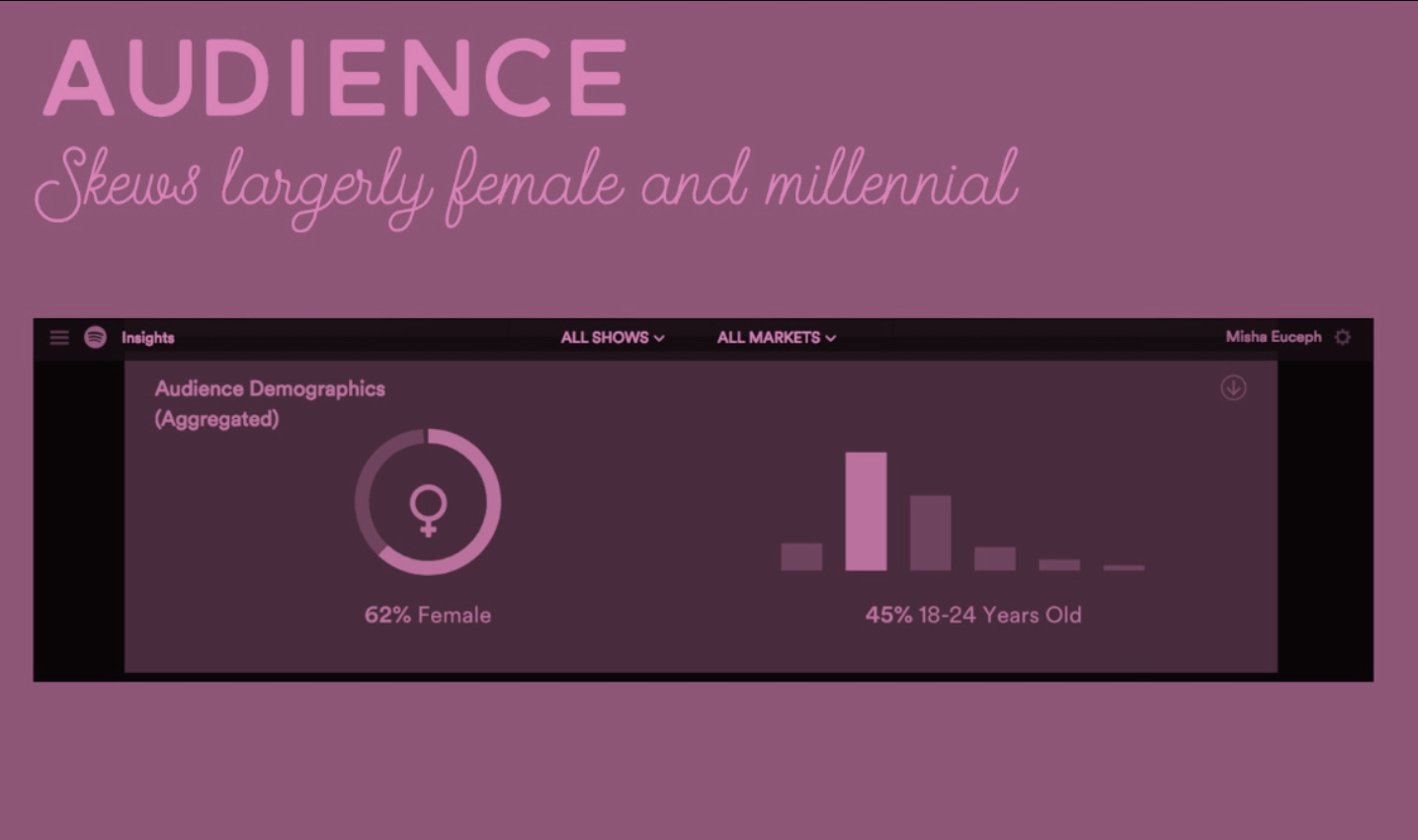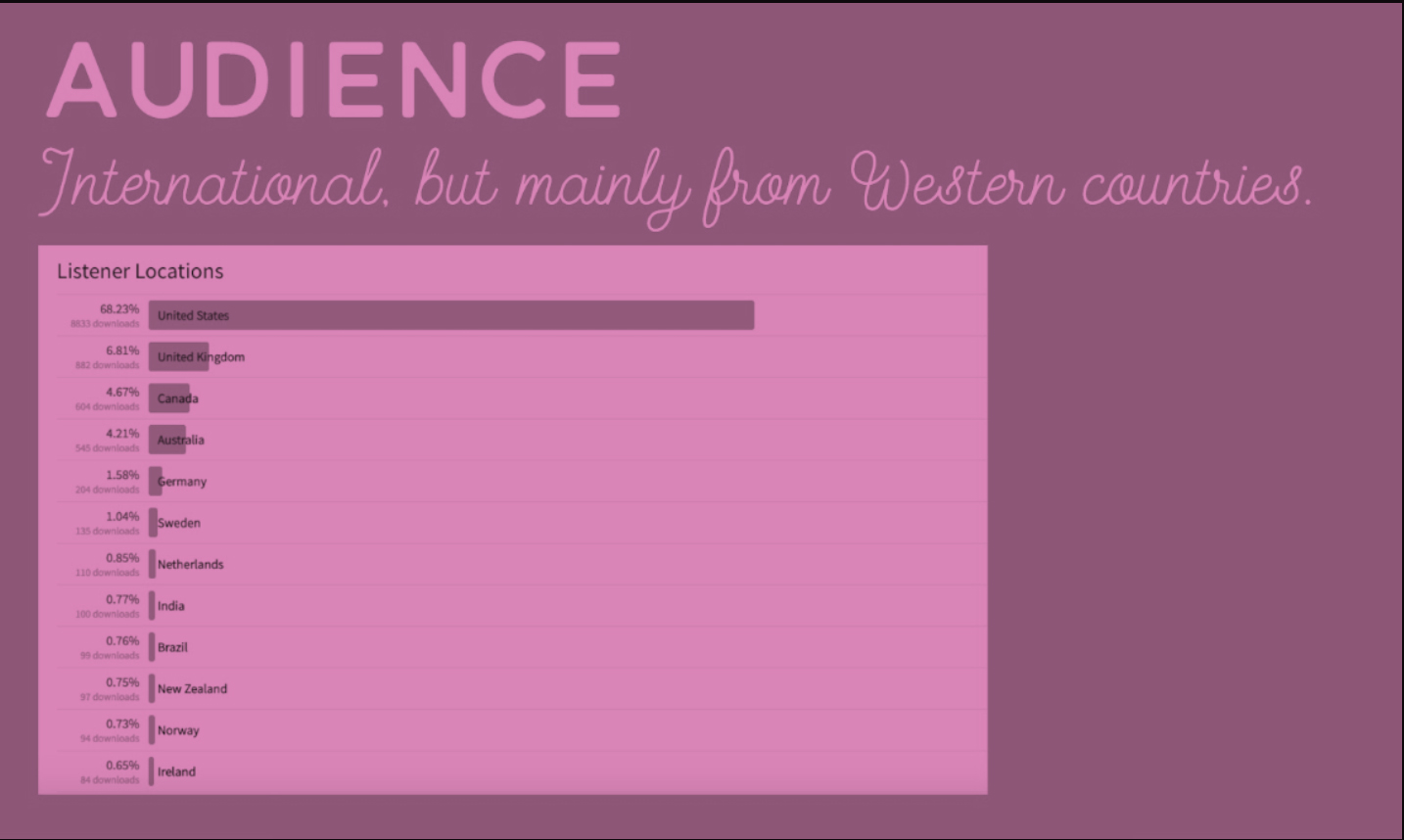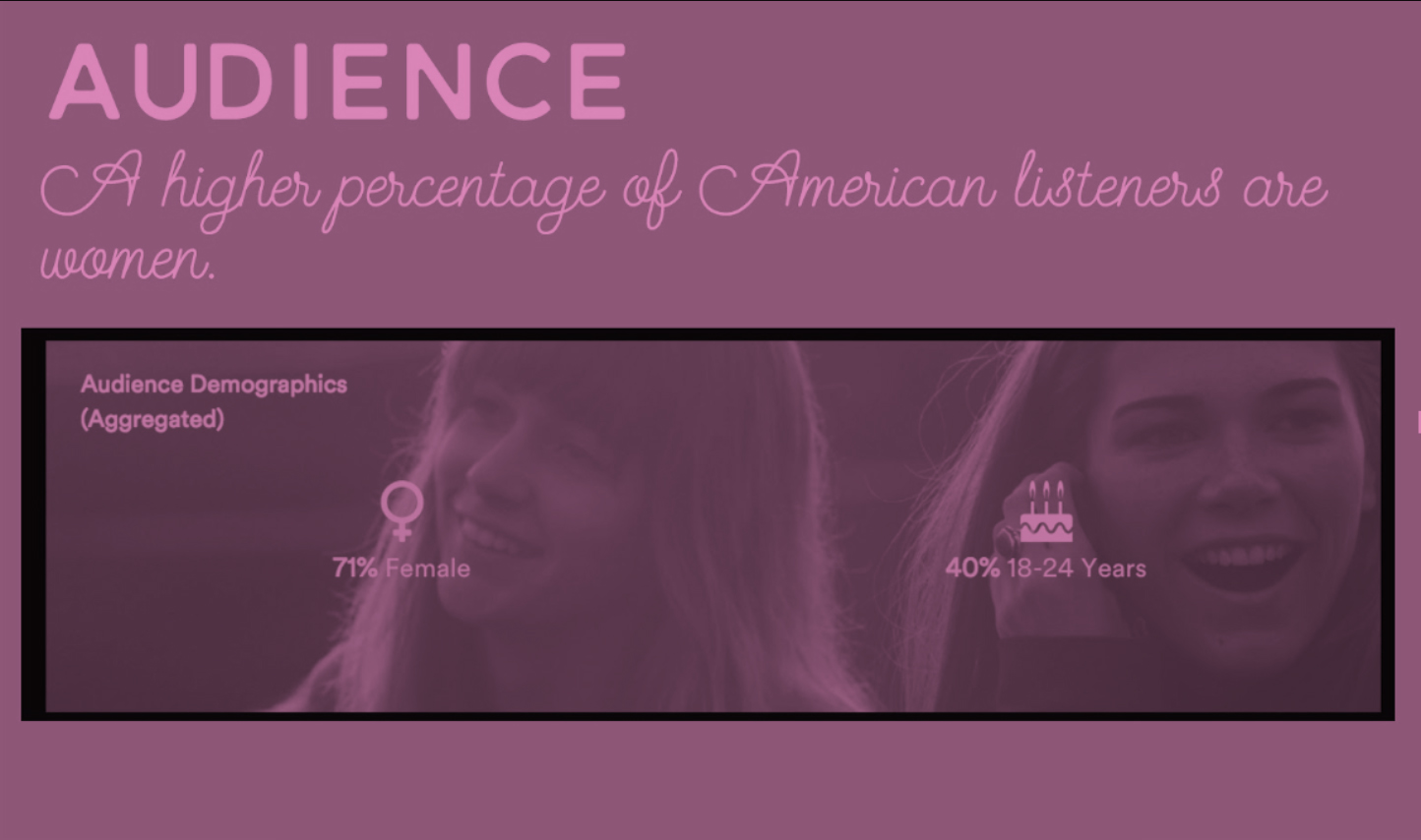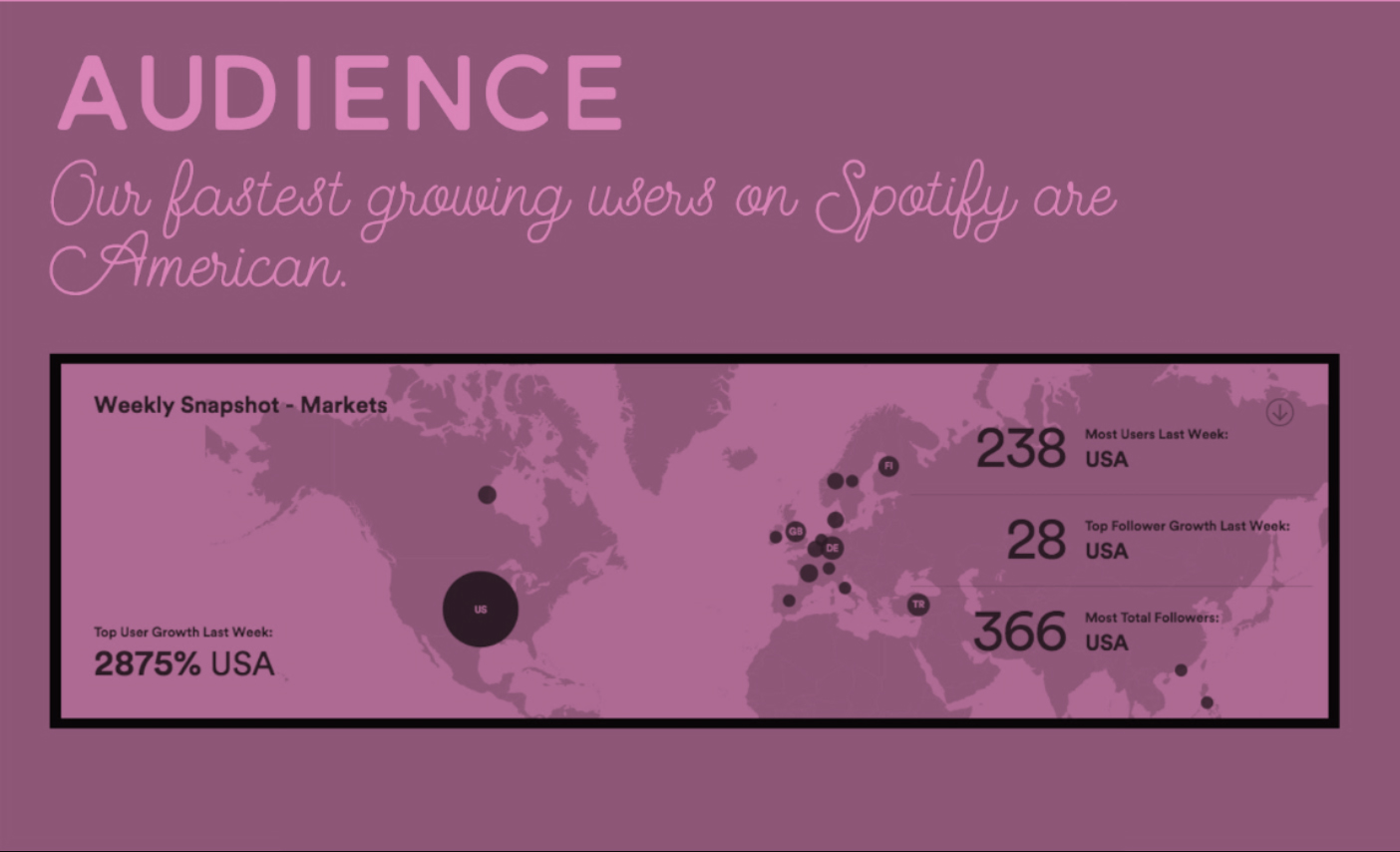Chapter 8
MAKE MONEY FROM YOUR PODCAST
In 2017, advertisers spent $220 million on podcasts. I talked to WIRED magazine about why: podcasts listeners are hyper-engaged and super supportive. This means that you can make money from your show even with a relatively small but loyal audience.
So how do you do it?
Advertising & Sponsorship
If you’re an avid podcast listener, you’ve heard the regular advertisers: Casper, Mailchimp, Squarespace, HelloFresh. You might even have used The Habitat’s discount code and gotten yourself a Quip like I did.
* This was before the IAB 2.0 standards became the norm in 2018. These standards redefine how you count downloads.
The Numbers
First, you have to reach a certain threshold to attract the attention of national advertisers. Most people in the industry would say 30,000 downloads per episode per month is the magic number.* That does not necessarily mean that you have to be at that number in order to shop around your podcast. If you can project that number in the first month of the show’s release, you can get many advertisers on board.
When I launched Beginner, the trailer reached 10,000 downloads within a month. I used that to project downloads for the first episode at 30,000 and I got attention from advertisers like Casper and companies like Performance Bridge Media-- which sells ads for companies to influencers and podcast producers.
Unless you work for a big production house like Gimlet or a public radio station, you probably don’t have a rolodex of advertising contacts or the right materials to send to them.
Here’s are some slides from my deck for Beginner:
The Deck
The first thing you need to do in order to get advertisers --national or otherwise-- is create a sponsorship deck.
This should include the following:
The name, tagline and description of your show.
Details about your core audience-- age, ethnic background, geographic location, spending habits, purchasing power and when they are likely to listen.
Most advertisers want an audience that they have not yet been able to reach. This means millennials or younger listeners who do not necessarily skew male, are coastal, American, or white. Women, people of color, younger and international listeners are particularly attractive.
The visuals of your show.
An example of audio-- either the first episode of your show, a trailer or a clip. If you have released a trailer or a first episode and it has gotten traction in the form of press or downloads, include that. It’s valuable to share something you have released so you can use its success as a selling point, and also use the specific data you get from it to hone in on your audience.
Your promotion plan-- do you plan to advertise on other shows. Do you have access to influencers with large audiences who will promote your podcast on their social media channel? How large is the audience on those other shows or on the social channels of those influencers? Will you have high profile guests whose publicists will advertise your show?
Your own track record-- why are you a trustworthy maker who will grow following quickly? Disclose your current following (if it’s big), share your previous experience as a producer, host or professional. If you’ve won awards or people have written articles about you, share those.
The final product of your deck should look visually appealing and must match the aesthetic of your show. You can put it together in a powerpoint, a PDF or a Google Doc.
Once you create a deck, it’s time to identify the correct sponsors for your show.
The People
You may not yet have numbers that would attract sponsors like Warby Parker or ZipRecruiter, but that does not mean that other, more local and smaller brands would not be interested in advertising with you.
Make a spreadsheet where you write down all of the sponsors you’ve ever heard on a show and all of the ones that you’ve not heard that you think would be a good fit for your show. Create a column for notes about why your podcast and that sponsor would be a good fit. Then, google them, show up at their shop, call their corporate number until you find the right person to send your deck. Send them your deck and ask to talk to them on the phone or in person.
If you go after a smaller sponsor and they are not ready to sell you an ad for a flat fee, you might want to negotiate sponsorship through giveaways. They give you a few of their items and you give them away to your listeners for free. This builds a loyal following, shows that you have sponsors, and gets your feet wet with advertising.
The Big Fish
If you want national sponsorship, are close in terms of numbers but don’t want to do the work on your own, you can reach out to advertising platforms such as Megaphone, Midroll, AudioBoom, and Wondery. They will sell your ads and take a cut of your revenue.
But if you want to keep your entire revenue instead of splitting it with a third party, you must go the independent route. Once you’ve grown your numbers to a threshold where national advertisers would be interested, or once you can project to that number, it’s time to reach out to them. I used the same strategy --of calling, emailing and showing up-- to build relationships with the sponsorship contacts for the companies I wanted to advertise on my show.
But, when it came time to send them my deck, there was a crucial piece of negotiation that I was unprepared for. They asked me what my CPM rate was. I didn’t even know what that meant! So, I talked to podcasters with full-time jobs and their own successful shows.
CPM is Cost Per Thousand. That means the advertiser will pay you a flat rate of $X for every 1000 impressions (downloads in podcasting) that your show reaches. But, they will generally require a guaranteed total number within a window of time. For example, they will agree to pay you $20 CPM per episode during a 45 day window. They will then run a trial campaign on your show. You will make your own ads, use their special code and get paid the agreed-upon rate.
When it’s time for you to negotiate your CPM rate, you can take into account things like your previous following, the success of your trailer, first episode or first season, press you’ve received and projected numbers through cross-promotion to get to a higher number. $20 CPM for 40,000 downloads is a standard place to start.
You will also discuss ad placement with your sponsors and the length of time for which the ad will exist in your show. Many advertisers will get more bang for their buck if you, the host, reads the ad. Or if you’re willing to place the ad in the beginning (pre-roll) or the middle of the show (mid-roll). Very few people are willing to advertise at the end of your show (post-roll), but sometimes you can sell an ad at a higher CPM for a package deal of both your pre and post roll spots. Advertisers will generally also bargain for longer spots in your show, but the standard for a mid-roll is 60 seconds per ad and the standard for pre or post spots is 15-30 seconds per ad.
After signing an agreement, advertisers will determine whether or not to keep advertising on your show based on CPA, which is Cost Per Acquisition. Generally, this number is much lower but much harder to reach. In my case, Casper’s CPA was around 2-5 over the course of the trial campaign of 3 ads for a 40,000 download agreement. If you do not reach the CPA, the advertiser will not continue advertising on your show. This could be after the trial campaign, after the first quarter or after several quarters, if your listenership decreases.
If advertising is not your thing or if you are not at the numbers that would get them to bite, there are other ways to make money off your show.
Subscription & Donation
Many successful podcasters use Patreon, where their listeners pay them for every creation (episode) they make. The listeners determine what rate they want to pay. Each person can pay something different. And the creators reward the listeners with exclusive perks, like a special, invite-only facebook group, listening parties, posters, or free merch. You can set up your podcast on Patreon using these guidelines.
You can also create a donation button on your website, or set up a paypal page through which your listeners can donate to your show. This creates some friction because you will regularly be asking your listeners for donations since they’re not bound by a subscription.
if you don’t want to pursue advertisers yourself but want to make the advertiser rate, check out radiopublic’s paid listens program. it does the work for you.
Live Shows & Merchandise
If you have the time, resources and listenership, and are already making enough money to cover your costs of production through another means, you might consider doing live shows and selling merchandise. You can use a website like Society6 to sell merchandise or set it up yourself. If a well-known illustrator with their own following wants to do your design, use their platform to elevate your podcast.









